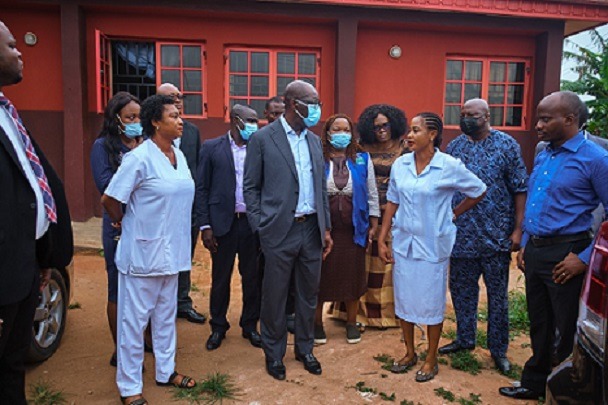
posted September 20, 2023
The Edo State Governor, Mr. Godwin Obaseki, has said his government has in the past seven years invested in revamping the State’s healthcare system to meet global standards, focusing on primary healthcare to ensure an affordable, quality, and efficient healthcare delivery to Edo people.
Speaking to journalists in Benin City, the governor said his administration prioritized the decentralization of the healthcare system, ensuring the expansion of healthcare services to more remote locations across the State so that no matter how far people live from the city centers, they will be able to access quality and affordable healthcare.
According to him, “For us, the emphasis has been on primary healthcare. Part of our whole healthcare strategy is hinged on four key factors. The first is healthcare financing. Somebody must pay, unlike in the past when everybody relied on government expenditure which just didn’t help our healthcare system. Most people now pay out-of-pocket. Without a healthcare financing system, it will be difficult to sustain any healthcare system.
“What we have done is to launch the Edo State Health Insurance Scheme. We asked ourselves, with the government’s limited finances, where should the government spend its money? Is it in secondary care or primary care? We chose primary care. Then how should we approach primary care? We decided to approach primary care from two perspectives: primary care at the time had just buildings. We said no, it’s human capacity more than anything else that drives the healthcare system.”
He further stated, “Most of the primary healthcare workers we met were residents in the local governments, and because the local government structure was very weak and couldn’t support an efficient primary healthcare center, it didn’t work. We had to set up a separate agency – the Primary Healthcare Development Agency.
“We moved the primary healthcare workers into that agency which we now share with the local governments. With that, we have control of them. We now changed their conditions of service and scheme of service to create more incentives for them to do the work and ensured adequate capacity building.”
Obaseki added, “Lastly, we adopted the technology. If you go into any primary healthcare center, we know you have come there because the healthcare workers take your vitals, record them and the doctor can see from the back-end the condition of that patient and then follow up. Our goal is to have 200 of these primary health care centers across the State with one in every ward.”

